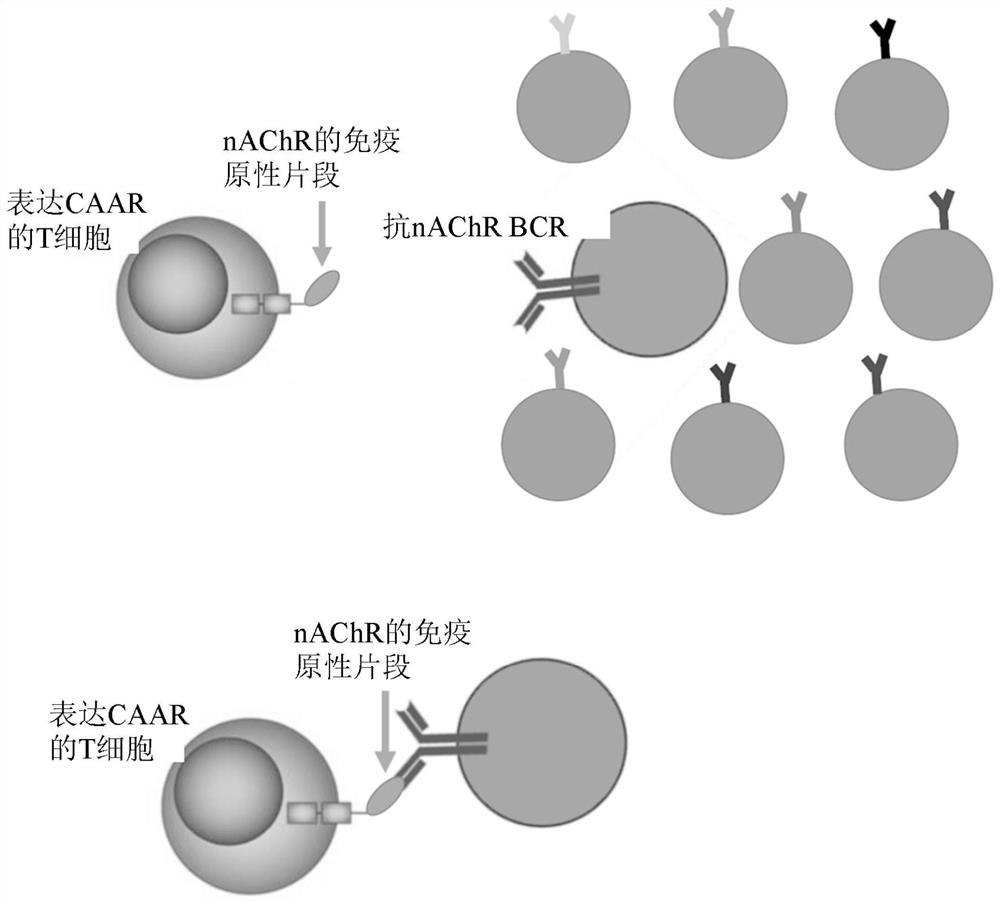Compositions and methods for targeting nicotinic acetylcholine receptor autoantibodies
A technology of autoantibodies and receptors, applied in the field of composition of diseases, can solve problems such as muscle weakness, loss, and no obvious cure for MG
- Summary
- Abstract
- Description
- Claims
- Application Information
AI Technical Summary
Problems solved by technology
Method used
Image
Examples
example
[0130] While the present disclosure has been particularly shown and described with reference to specific embodiments, some of which are preferred, it should be understood by those skilled in the art that other modifications may be made without departing from the spirit and scope of the present disclosure disclosed herein. Various changes in form and detail have been made therein.
example 1
[0132] Expression of CAAR in human primary T cells .Design and generate CAAR constructs of interest ( figure 2 ). Primary human T cells were cultured, expanded, stimulated, and transduced with CAAR or mock-transduced. Validation of cell surface expression of CAAR in engineered T cells (CAAR T cells).
[0133] CAAR In vitro efficacy testing of T cells . CAAR T cells (or control T cells) were co-cultured with cells expressing anti-nAChR BCR (target cells). Cells of interest, such as hybridoma cells, are generated in-house or purchased from ATCC (eg, 5A1-2A8 cells, accession number PTA-8513; 1H11-2E10 cells, accession number PTA-8512; mAb35 cells, accession number TIB-175). Cytotoxicity is calculated based on the percentage lysis of target cells. CAAR T cells specifically kill target cells, but not non-target cells, indicating the specificity of CAAR T cells to kill target cells.
[0134] In vivo efficacy testing of CAART cells. After pretreatment of mice with intraven...
PUM
 Login to View More
Login to View More Abstract
Description
Claims
Application Information
 Login to View More
Login to View More - R&D Engineer
- R&D Manager
- IP Professional
- Industry Leading Data Capabilities
- Powerful AI technology
- Patent DNA Extraction
Browse by: Latest US Patents, China's latest patents, Technical Efficacy Thesaurus, Application Domain, Technology Topic, Popular Technical Reports.
© 2024 PatSnap. All rights reserved.Legal|Privacy policy|Modern Slavery Act Transparency Statement|Sitemap|About US| Contact US: help@patsnap.com










